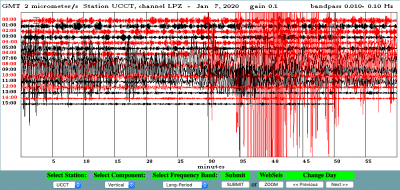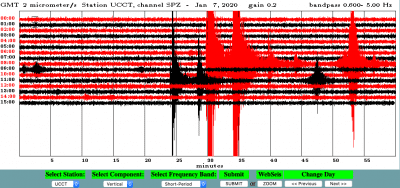

The Geophysics research group (Prof. Vernon Cormier and students) operate a seismic wave station that continuously monitors vibrations in the earth’s crust, many of which arise from seismic events that happen far away. These waves travel through the deep earth, and eventually make their way to the surface where they are detected. The above figures show high frequency and low frequency filtered seismograms recorded at UConn’s seismic station for the vertical component of ground motion from the earthquakes in Puerto Rico on January 7, 2020. The 3 bursts of energy are P and S elastic waves, followed by a T wave, which propagates as an acoustic wave in the ocean. In the high frequency seismogram (first figure), the large red trace is the main shock and the black trace below it is an aftershock. In the low frequency filtered seismogram (second figure), the largest energy propagates as a surface wave trapped in Earth’s crust and upper most mantle, with energy exponentially decaying into the mantle. Amplitude scale for ground particle velocity is shown by a bar in the upper left corner.